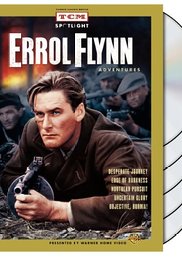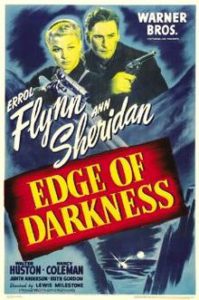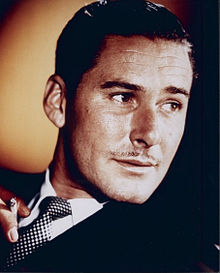Edge of Darkness **** (1943, Errol Flynn, Ann Sheridan, Walter Huston, Judith Anderson, Ruth Gordon, Nancy Coleman, John Beal, Helmut Dantine) – Classic Movie Review 4,752
Errol Flynn stars as Gunnar Brogge, the leader of the Trollness Norwegian underground, in the stirringly done 1943 patriotic wartime film Edge of Darkness.
Warner Bros’ World War Two patriotic wartime toast to the brave Norwegians who brought about a revolt against the Nazis during the German occupation of their country is a rousing and gripping movie.
Errol Flynn stars as Gunnar Brogge, the leader of the Trollness Norwegian underground, who leads the revolt, in director Lewis Milestone’s stirringly done and well-meaning 1943 film story Edge of Darkness, even if it retreads often-covered territory.
The sterling cast and director Milestone try hard to keep it as fresh and exciting as possible – and largely succeed. Ann Sheridan does well as Flynn’s love interest Karen Stensgard and Walter Huston is fine as her father, the village doctor Dr Martin Stensgard, who is the last to join the struggle, with Judith Anderson a standout in support as Gerd Bjarnesen.
Edge of Darkness is a particularly finely achieved movie, made with a lot of loving care. The music by Franz Waxman, screenplay by Robert Rossen and especially the black and white cinematography by Sid Hickox are all first rate. Waxman used the Lutheran chorale ‘A Mighty Fortress is Our God’ and the national hymn of Norway in his score.
Rossen adapts the 1942 novel The Edge of Darkness by William Woods. It was his first novel, published on 9 April 1942, the second anniversary of the German invasion of Norway. Warners bought the film rights in January 1942 for $30,000, out of the film’s total budget of $1,653,000. It was a hit, taking $3,669,000.
Milestone said: ‘We know the enemy we are fighting and we are facing the stern realities of the present war. The moral in Edge of Darkness is that “united we stand, divided we fall”. That is the keystone for victory in all the democracies.’
The war might have been raging but Flynn slipped down to Mexico City with a friend for some hunting, and filming had to be postponed for two weeks. Flynn had replaced Humphrey Bogart but had not wanted to do the film, in part because his role was relatively small. Bruce Cabot was standing by as a replacement if Flynn did not return to Hollywood.
The actors can be pardoned if they might seem to have been otherwise preoccupied: Flynn was enduring the aftermath of his statutory rape trial scandal (Flynn was acquitted but his screen image was damaged), Sheridan was divorcing actor George Brent, and a fed-up Anderson was straining to leave to star in a play on Broadway.
The cast are Errol Flynn as Gunnar Brogge, Ann Sheridan as Karen Stensgard, Walter Huston as Dr Martin Stensgard, Nancy Coleman as Katja, Helmut Dantine as Captain Koenig, Henry Brandon as British secret agent Major Ruck, Judith Anderson as Gerd Bjarnesen, Ruth Gordon as Anna Stensgard, John Beal as Johann Stensgard, Morris Carnovsky as Sixtus Andresen, Charles Dingle as Kaspar Torgersen, Roman Bohnen as Lars Malken, Richard Fraser as Pastor Aalesen, Art Smith as Knut Osterholm, Tom Fadden, Frank Wilcox, Peter Van Eyck, and Helene Thimig.
Milestone recalled: ‘An extremely mixed cast gave some damned good performances. Flynn kept underrating himself. If you wanted to embarrass him, all you had to do was to tell him how great he was in a scene he’d just finished playing. He’d blush like a young girl and, muttering “I’m not an actor”, would go away somewhere and sit down.’
Most of the film was shot in Warner Bros’ Burbank studios but with some location filming in Monterey, where the streets were lined with Norwegian and Nazi flags and signs and many locals were cast as extras.
© Derek Winnert 2016 Classic Movie Review 4,752
Check out more reviews on http://derekwinnert.com





